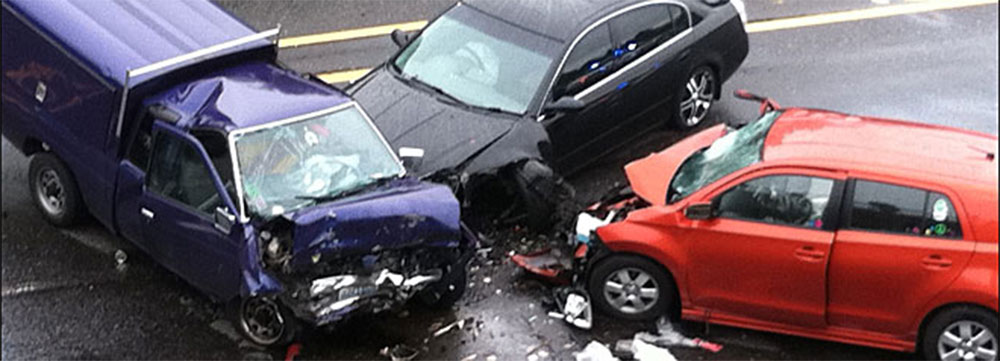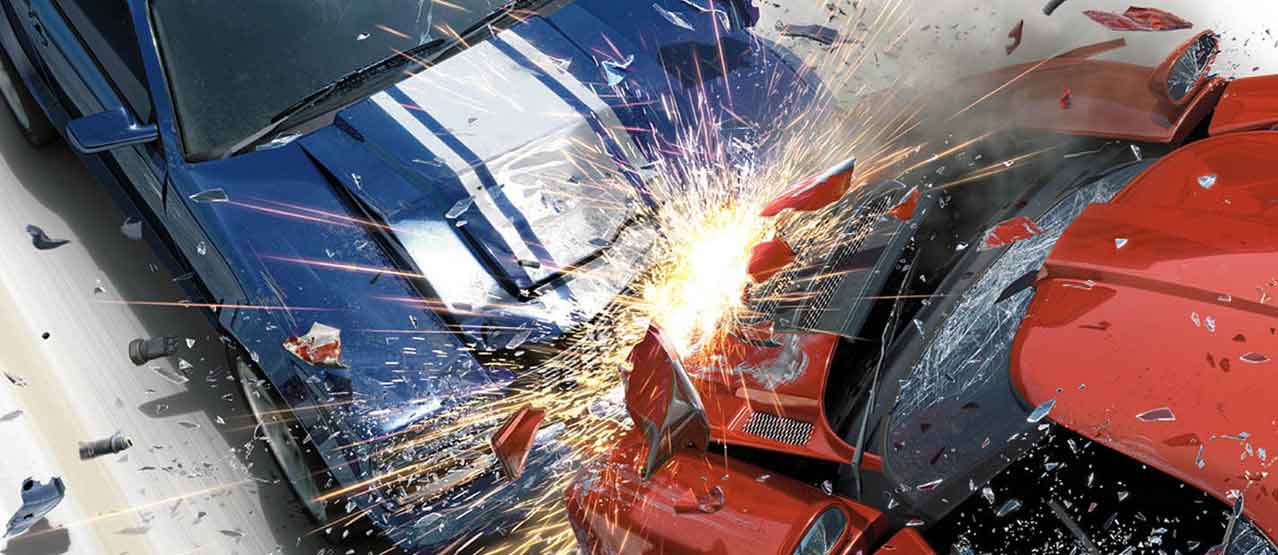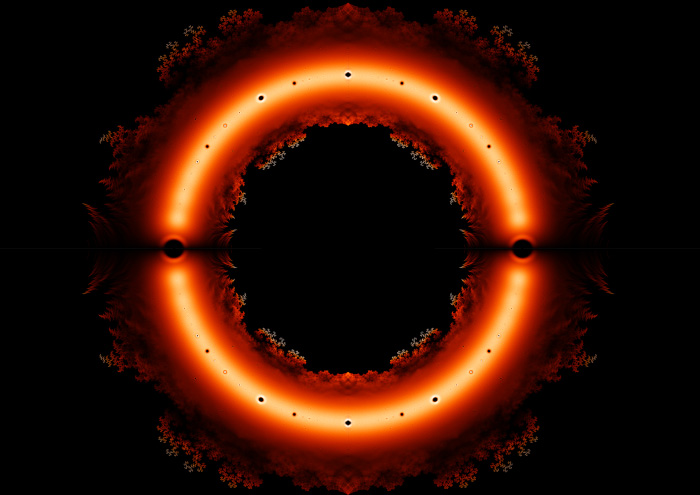What do you get when two cars crash head on at full speed?
A heap of twisted metal.
What do you get when two tiny cars crash head on at full speed?
A smaller heap of twisted metal.
In the limit, what do you get when two point cars crash head on at full speed?
A point of twisted metal?
No, you get a point car with a better GPS system!
Huh?
All a point can see of a function is its own value. Call this a basic, grade one GPS.
When two points collide you’ll get a grade two GPS: not only does it give you its value, but also the tendency of the function in a tiny neighbourhood of the point.
It doesn’t matter whether the two point-cars collide along a line, or in the plane or in 24-dimensional space, you’ll always get the same grade two GPS.
Things become more interesting when three or more point-cars crash together.
For three point-cars colliding in the plane a crash-scene investigator can tell from the resulting grade three GPS whether they crashed along a curve, or more randomly.
Again, if this crash happened in a higher dimensional space, you’d still have only hese two types of grade three GPS’s.
And if 4 point-cars pile up?
Then, there are 4 possible types of grade four GP-systems. For crashes of 5 point cars there are 9 possible types, and so on.
Always a finite number?
Hah, no! Seven or more point-cars can pile up in infinitely many ways.
How on earth would you prove such a thing?

A bit of classical geometry, and an extra bit of GIT.
If you’d try to describe all possible 7-car configurations up to isomorphisms, one of the subproblems you run into is to classify all possible intersections of two quadrics in $\mathbb{P}^3$. These usually give you an elliptic curve, and there is a 1-parameter family of those.
Wow!
It only gets better.
Let’s say a grade n GPS knows $n$ behavioural facts about functions, among which its value, in some locally closed neighborhood of the point.
Does such a GPS necessarily comes from the collision of n point cars in some high dimensional space?
Or put differently, can you unravel any GPS into n distinct point cars, just before they crash?
The way you ask this I suspect you’re going to tell me it’s not always possible. But, I haven’t the faintest clue on how to approach such a problem.
You’re right, it’s not always possible.
There exist grade 8 GPS’s which you can’t get from smashing 8 point cars in a 4 or higher dimensional space.
And you’ll need some scheme theory to prove this.
It’s pretty easy to show that the component containing n distinct point-cars in the scheme of all possible n-point configurations has dimension $n^2$. Follows because the automorphism group of n distinct point-cars is just the group of all permutations of the n points.
All grade n GPS’s made from massive car collisions are points in that component.
But then, the tangent space in such a point must have dimension at least $n^2$.
And then, all one has to do is to engineer a grade n GPS with a smaller dimensional tangent space.
A Berkeley group of 9 geometrical engineers did just that: Jonah Blasiak, Dustin Cartwright, David Eisenbud, Daniel Erman, Mark Haiman, Bjorn Poonen, Bernd Sturmfels, Mauricio Velasco, and Bianca Viray.
Here’s their simplest example:
$\mathbb{C}[a, b, c, d]/(a^2, ab, b^2, c^2, cd, d^2, ad − bc)$
Details can be found here:
B. Poonen : The moduli space of commutative algebras of finite rank.
B. Poonen : Isomorphism types of commutative algebras of finite rank over an algebraically closed field.
Leave a Comment




